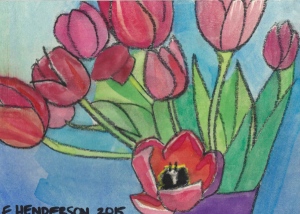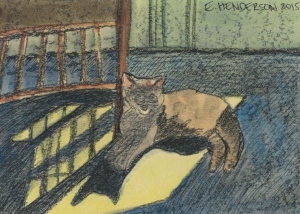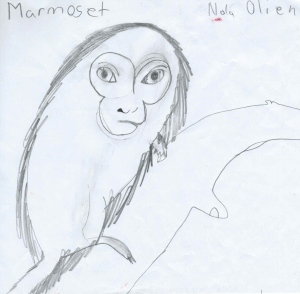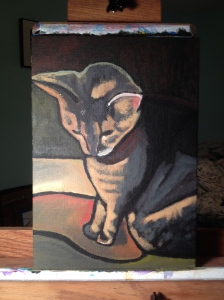As an artist on a budget, I am very aware of what materials cost. I don’t want to spend extra money if I don’t have to and I wanted to do a new art project.

While reading a digital version of the book The Drawing Bible, by Craig Nelson, he suggested many different types of drawing surfaces. One of them was mat board. Wait a minute! I have lots of extra pieces of mat board. In the past, I have used whole sheets of mat board for large paintings.
Mat board is great for a variety of mediums. I did try one prepared with gesso first, but decided that I like working directly on the mat board surface better.
I began by making a simple sketch on 5″ x 7″ mat board with Conte crayon. I smudged the lines with my fingertip. Then I sprayed the surface with workable fixative. I painted the image with watercolor. I sprayed the surface again with fixative. When that was dry, I painted a coat of glossy Liquitex Medium & Varnish on top. (For some pieces, I used Liquitex Matte Medium. The matte surface is much softer and looks like it isn’t there at all, but still protects your art.)
Making these “little” pieces of art is fun. Finding extra materials around the house that you can use for your art can save you a lot of money. Finished pieces can be mailed as postcards or given as gifts to loved ones.









